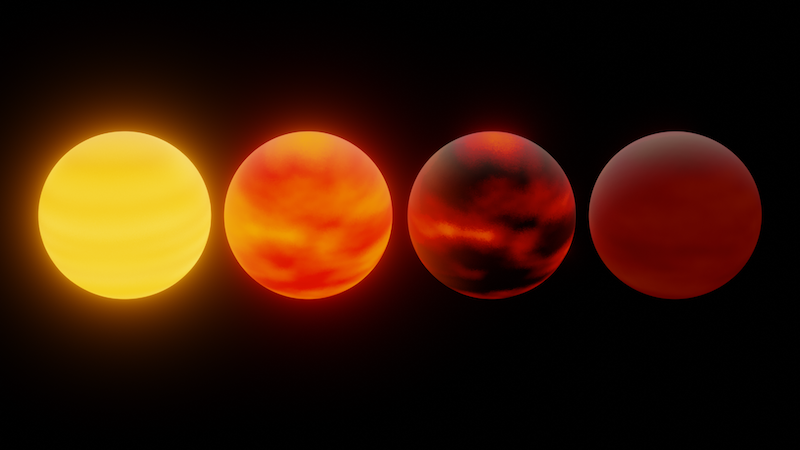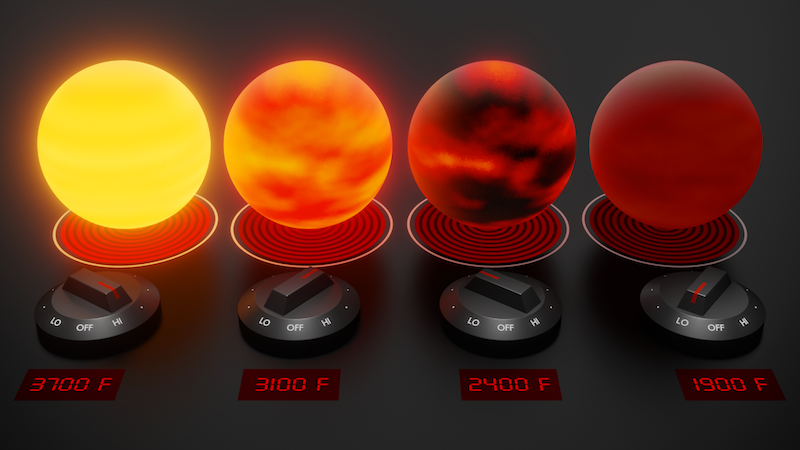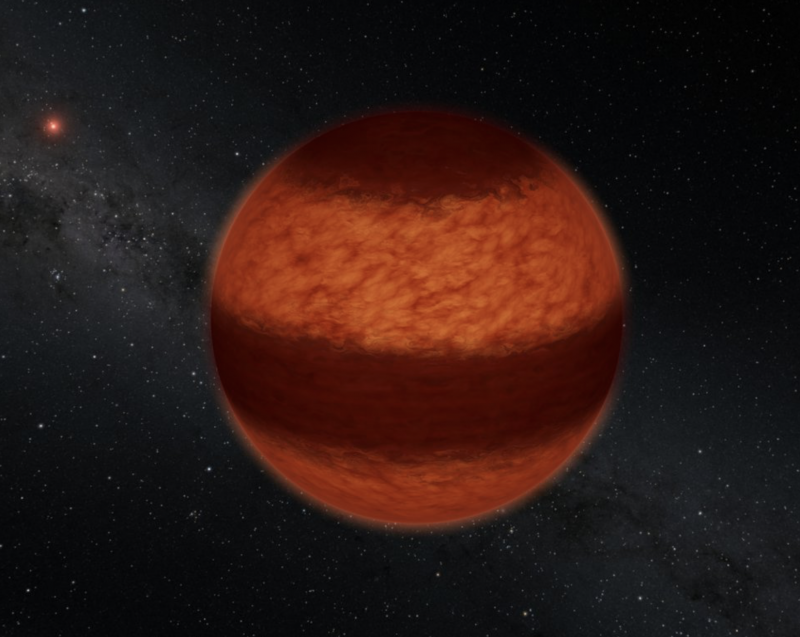
Exotic worlds with clouds of sand
Clouds here on Earth are made of water droplets or ice crystals floating in the sky. But did you know that some distant worlds have clouds made of sand? In these exotic atmospheres, the clouds are composed of tiny dust grains called silicates. In a May 2022 study, researchers say they’ve observed, for the first time, how these sand clouds form. Temperature, they say, is key. It needs to be hot … but not too hot.
Clouds of sand on brown dwarfs and exoplanets
Although our planet’s clouds – from feathery cirrus clouds to towering thunderheads – are composed of water ice. Other planets in our solar system have different kinds of clouds. Mars, for example, has both water ice and carbon dioxide clouds. Jupiter has high-altitude clouds made of ammonia and ammonium hydrosulfide.
And the skies of some distant worlds even contain sand clouds, clouds made of rock forming minerals called silicates. Astronomers have found evidence for these sand clouds on some exoplanets, – planets outside of our solar system – and also on brown dwarfs. Brown dwarfs are exotic objects, more massive than planets.
In the new study, based on data from the now-retired Spitzer Space Telescope, scientists at Western University in Ontario, Canada, observed how these silicate clouds form on brown dwarfs. The findings were published in the July 2022 issue of the peer-reviewed journal Monthly Notices of the Royal Astronomical Society. There is also a free version on the arXiv preprint server.
How clouds of sand form
All clouds form in a similar manner, when a key ingredient becomes warm or hot enough to vaporize. On Earth, ice particles can vaporize and form water vapor clouds. Clouds on other planets – such as Mars and Jupiter – can form from various ingredients. These can include ammonia, salt or even sulfur.
But silicate clouds – aka sand clouds – can only form on hot worlds. That’s because silicates require very hot temperatures to vaporize. According to the study, you need atmospheric temperatures between about about 1,000 degrees C (1,900 degrees F) and 1,700 C (3,100 F). But in atmospheres hotter than the top end of this range, silicates remain a vapor.
Cloud formation on other worlds
While this study deals with brown dwarfs, the researchers say their results can be extrapolated to exoplanets, as well. The findings provide clues about cloud formation on both kinds of worlds. This is true even for planets that are closer to Earth in size, mass and temperature. Co-author Stan Metchev at Western University stated that:
Understanding the atmospheres of brown dwarfs and planets where silicate clouds can form can also help us understand what we would see in the atmosphere of a planet that’s closer in size and temperature to Earth.

While brown dwarfs aren’t quite planets, their atmospheres are similar to some gas giant planets. Therefore, studying the atmospheric processes on them can provide clues about the atmosphere of gas giant exoplanets.

Thanks to Spitzer, astronomers already had some evidence for silicate clouds on brown dwarfs. That evidence was often weak, however. With this in mind, the now fully-operating Webb telescope will be able to take a closer look at some of these brown dwarfs.
New analysis of old data
The new study builds on previous analysis, with new results. The researchers selected over 100 of the previous marginal detections of silicate clouds and grouped them according to the temperatures of the brown dwarfs. The astronomers had already set a predicted temperature range within which silicate clouds should form on the brown dwarfs. This range extended from about 1,900 degrees Fahrenheit (1,000 degrees Celsius) to 3,100 F (1,700 C).
And, indeed, all of the previous detections fell within the predicted temperature range. That itself is evidence for the presence of silicate clouds on those brown dwarfs. According to Genaro Suarez, lead author at Western University:
We had to dig through the Spitzer data to find these brown dwarfs where there was some indication of silicate clouds, and we really didn’t know what we would find. We were very surprised at how strong the conclusion was once we had the right data to analyze.


What about atmospheres that are either above or below that temperature range? The researchers found that in hotter atmospheres, the silicates vaporize. In colder atmospheres, they either turn into “rain” or sink into the lower atmosphere.
Silicate clouds on Jupiter?
Another interesting aspect of the study is how it may relate to Jupiter. As already mentioned, Jupiter has clouds composed of ammonia and ammonium hydrosulfide. But it may also have silicate clouds, just like the brown dwarfs. Scientists theorize that they likely exist deeper down in the giant planet’s thick atmosphere. That is where it is hot enough for them to form. The top of the atmosphere, that we can see, is too cold for them to exist.
Bottom line: Scientists at Western University in Ontario, Canada, published a new study about how clouds of sand (silicates) can form in the atmospheres of brown dwarfs and gas giant exoplanets. The results provide new insights into the atmospheres of both kinds of distant worlds.











